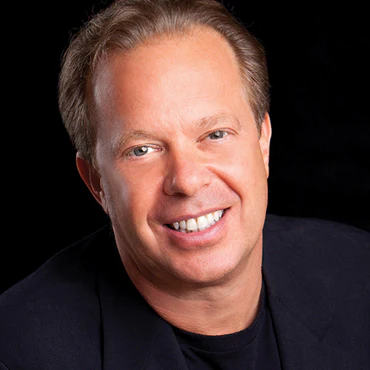
This article reviews a conversation between Joe Dispenza and Mark Hyman, exploring Dispenza’s research on how the mind can heal the body. They discuss spontaneous remission, emphasizing the power of changing thoughts, feelings, and behaviors to alter biology and overcome illness. Dispenza outlines a four-element approach involving belief in inherent life force, taking responsibility for one’s health, envisioning a healthier future, and achieving a state where time and space become less prominent. The discussion also covers practical techniques for improving mental and physical well-being, including meditation, gratitude, and mindful attention. Finally, they touch on Dispenza’s work, including online courses and live events designed to teach these methods.
FAQ on Mind-Body Connection and Personal Transformation
1. What is spontaneous remission and how does it relate to the mind-body connection?
Spontaneous remission refers to the unexplained disappearance of an incurable disease without medical intervention. It suggests that the body can heal itself, likely through a shift in consciousness. This phenomenon highlights the power of the mind-body connection, where our thoughts, emotions, and beliefs can profoundly influence our physical health. The concept proposes that the body is not just a mechanical entity but responds dynamically to our inner state.
2. How does your personality influence your personal reality and health?
Your personality is defined by how you think, act, and feel on a daily basis. These elements have a direct relationship with your personal reality, including your health. If you maintain negative thoughts, actions and feelings, it can lead to a negative reality, possibly including physical ailments. Conversely, changing your personality through different thinking patterns, actions, and emotions can result in a positive change in your personal reality, potentially leading to healing and improved well-being.
3. How does the past influence our current health and well-being, and what can we do about it?
Our brains often function as a record of our past experiences, and our bodies become emotionally conditioned to past events. When we dwell on past problems or negative emotions, the body reacts as if it is reliving those events, creating an ongoing state of stress that can downregulate our genes and contribute to disease. To break free, we need to consciously become aware of our unconscious thoughts, habits, and emotions, and practice self-regulation to move into the present moment, creating new neural pathways and biological responses.
4. What is the role of meditation in creating change?
Meditation, understood as becoming familiar with oneself, provides a way to bring unconscious thoughts, habits, and emotions into conscious awareness. By repeatedly recognizing and consciously addressing these patterns during meditation, we can weaken their hold on our mind and body. Over time, this practice can prune old neural pathways and develop new ones, shifting the body out of a habitual, stressed state and allowing it to move towards healing and growth. The act of simply not reacting to old patterns in meditation is a victory because it shows that you have the ability to consciously not follow the old programming.
5. How do our emotions and stress hormones impact our physical health?
Strong negative emotions and the resulting stress hormones divert energy away from growth and repair functions, causing the body to focus on survival mode. This constant state of stress can keep genes regulated for disease. By practicing conscious awareness and lowering the volume on these emotions we can redirect our energy toward healing and well-being. This is accomplished by consciously deciding to feel new, elevated emotions.
6. How can we rewire our brains and change our emotional states?
We can rewire our brains by intentionally choosing different thoughts, actions, and emotions. Mental rehearsal of desired behaviors and emotional states helps to install new neurological hardware in the brain, making those new behaviors more likely. By teaching the body to experience desired emotions in advance of external experiences we signal our genes to produce proteins associated with health and well-being. This rewiring is a conscious process of breaking old, self-defeating patterns and creating new, healthier ones.
7. What are the four key elements of healing with the mind, and how do they work together?
The four key elements of healing are:
- Acknowledging an innate power of life within.
- Recognizing the role your thoughts, actions, and emotions play in your health condition.
- Actively envisioning and reinventing a new self with different thinking, actions, and emotions.
- Experiencing a loss of space and time within an inner process.
These four elements work together by acknowledging there’s something more within us that can heal us, taking ownership of our own role in the way things are, consciously recreating the person we are, and developing an inward focus that transcends time and space to change.
8. How do gratitude and other elevated emotions contribute to healing, and what is the science behind it?
Practicing gratitude produces significant changes in heart rhythms, leading to a state where the brain recognizes safety. This state supports increased production of IgA, the body’s natural antiviral and antibacterial agent, promoting immune regulation. Moreover, gratitude and similar elevated emotions shift the body from a survival-based state, promoting gene expression that leads to regeneration and growth. Essentially, gratitude helps create an inner environment that corresponds with health and well-being, thus impacting the body on a molecular level.

Quiz
Instructions: Answer each question in 2-3 sentences.
- What is the concept of spontaneous remission, and what is the key factor, according to the source, that may cause it?
- What was Joe Dispenza’s personal “wake-up call” that led him to explore the mind-body connection?
- According to Dispenza, what are the three elements of your personality that directly relate to your personal reality?
- Why is it so challenging for people to change, and what is the key to making different choices?
- How does the brain function as a “record of the past” and how does this impact the body?
- According to the text, why do people often stay sick even when following good health protocols?
- What does meditation literally mean according to the source and how does that relate to change?
- Why does the body try to influence the mind in meditation, and what is the value of overcoming that influence?
- How do we develop habits, and what is the process for breaking them according to Dispenza?
- What is the relationship between gratitude and immune regulation, according to the source?
Answer Key
- Spontaneous remission refers to the disappearance of an incurable disease without medical treatment. The source suggests that this is most likely caused by a shift in consciousness.
- Joe Dispenza was run over by a truck and broke six vertebrae in his spine. Faced with a grim diagnosis, he decided to explore whether the mind could heal the body rather than depend on surgery and addictive medications.
- The three elements are how you think, how you act, and how you feel. These three elements collectively shape your personality, which has a direct impact on your personal reality.
- It is difficult because it is uncomfortable and unfamiliar, and it involves leaving the known self. The key to making a different choice is to be uncomfortable, leave the known self, and create new habits.
- The brain is a record of everything learned and experienced, keeping you thinking and feeling about the past. This keeps the body emotionally conditioned into the past, which affects its biology.
- Even with optimal diets, if a person lives in fear or pain, the cell is in an emergency state and can’t grow or repair. The body’s environment affects its state of growth.
- Meditation literally means “to become familiar with”. This is key because becoming familiar with your unconscious thoughts, habits, and emotions allows you to move beyond them.
- The body influences the mind because it is used to habitual thought patterns and behaviors; meditation means to overcome these unconscious influences. By overriding these patterns you’re executing a will that is greater than the unconscious programs.
- A habit occurs when the body influences the mind and doing it enough times makes the body the mind. You break that conditioning process through conscious effort and then the body moves into the present moment.
- The practice of gratitude causes the heart to beat in a rhythm that signals to the brain that it is safe and creates a state of receiving. This changes gene expression and immune regulation by producing chemicals such as immunoglobulin A.
Essay Questions
Instructions: Choose three of the following questions to address in an essay format.
- Discuss the key principles of Joe Dispenza’s approach to healing, explaining how he believes the mind can influence the body.
- Explain the concept of the “familiar past” and how it can create patterns of illness or disease. Use examples from the source.
- Describe how meditation can be used as a tool for self-change and overcoming unconscious patterns, according to Joe Dispenza.
- Analyze the role of elevated emotions like gratitude in creating positive biological changes, according to the ideas presented by Dispenza.
- Discuss the four “super villains” identified by Jim Kwik and their impact on learning and personal development.
Glossary of Key Terms
- Spontaneous Remission: The disappearance of an incurable disease without conventional medical treatment, often linked to a shift in consciousness.
- Personality: The combination of how one thinks, acts, and feels, which directly influences personal reality.
- Personal Reality: An individual’s subjective experience of life, shaped by their thoughts, actions, and emotions.
- Epigenetics: The study of how environmental factors can affect gene expression and impact health and behavior.
- Meditation: A practice of becoming familiar with one’s unconscious thoughts, habits, and emotions to enable conscious change.
- Mind-Body Connection: The concept that the mind has a direct influence on the body’s physical health and functioning.
- Conditioning Process: The repeated combination of thoughts, feelings, and actions that leads to the body becoming programmed to operate on autopilot in the familiar past.
- Witness Consciousness (non-judgmental awareness/mindfulness): The aspect of self that is aware of your own thoughts, feelings, and behaviors, rather than being controlled by them.
- Brain Coherence: A state of order and rhythm in brain activity where different regions communicate harmoniously, associated with elevated emotional states.
- Divergent Focus: Broadening focus from the material world to the less physical world of space and energy and the inner world of elevated emotions.
- Elevated Emotions: Positive states such as joy, gratitude, inspiration, and love that cause positive biological changes.
- Hormones of Stress: Chemicals released during stress that tap the body’s resources and narrow focus.
- Present Moment: The state of being fully aware and engaged in the current experience, rather than dwelling on the past or future.
- Synchronicities: Meaningful coincidences that occur when a person has a coherent brain and heart.
- Subvocalization: Saying the words in your head as you read.
- Fixations: Eye stops when reading, with less fixations leading to faster reading.
- Regression: The act of rereading words while reading that slows the process down.
- Limitless Model: Jim Kwik’s method of self-improvement consisting of three components – mindset, motivation, and method.
- Inspiration: The intersection of mindset and motivation which creates the initial desire to change.
- Implementation: The intersection of motivation and method, putting a plan into practice.
- Ideation: The intersection of mindset and method that allows one to devise solutions.
- Integration: The sweet spot of mindset, motivation, and method where true transformation happens.





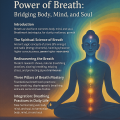

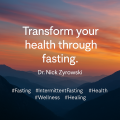
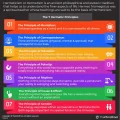






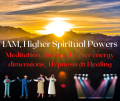

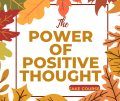
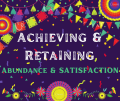
0 responses on "HEAL Your Body With Your MIND! | Joe Dispenza & Mark Hyman on Spontaneous Remission & the Power of Thought"